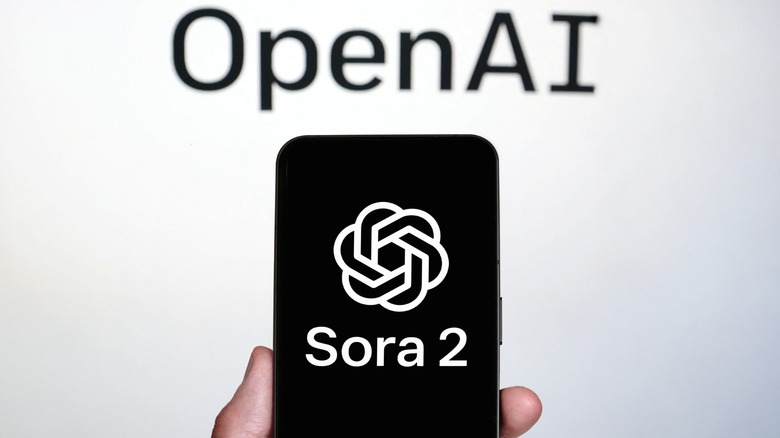Sora Vs Sora 2: Here's What OpenAI's Newest Video Model Can Do
When Sora was announced in February 2024, it marked OpenAI's first video generation model. But it wasn't officially released until December, when it became available to ChatGPT Plus and Pro subscribers. With Sora, users can simply use text or other prompts to generate videos. The visual content of these videos was impressive, but something was missing; it lacked audio, and that is the main upgrade Sora 2 provides.
OpenAI's Sora 2 video generator now adds audio in the form of synchronized dialogue and sound effects. The upgrade was released on September 30, and the company described it as a model that "can do things that are exceptionally difficult and in some instances outrightly impossible for prior video generation models." Sora 2 improves on Sora's limitations, especially concerning video realism. With Sora, animations didn't feel well-grounded, sometimes looking like the algorithm forgot to apply basic laws of physics to the generated videos. OpenAI saw this as the model being overly optimistic and relying too heavily on executing prompts rather than keeping the videos realistic.
Aside from improved realism, Sora 2 introduces the new Cameos feature, launching alongside the Sora iOS app. This will allow users to include their likeness in generated videos. Once you record a short one-time video and audio recording to verify your identity, Sora 2 can drop you into any generated scene with accurate appearance and voice rendering. This works with humans, animals, and even objects. It also shows why OpenAI calls Sora 2 its "GPT-3.5 moment" for video, suggesting they've leaped several generations ahead with this release.
Sora 2 access and pricing structure
OpenAI has adopted a very strategic approach in rolling out Sora 2. The model launched first in the U.S. and Canada via invite-only access before the company then took it to the Asian continent, more specifically into Japan, South Korea, Thailand, Vietnam, and Taiwan. The invite-only access means that, at the moment, users who want to use the Sora app (with Sora 2) must join the iOS app waitlist before gaining entry to use the model for free. Sora 2's Android integration is yet to be announced. However, the Sora Android app (with Sora) launched this month, getting about 470,000 downloads on the first day.
When it comes to pricing, Sora 2 uses a credit system, so every video will eat up credits based on resolution, duration, and whether you're using the standard or Pro model. The current iOS and web release lets only invitees use the Sora 2 standard version, for free. That includes all the core features like video generation, audio effects, and basic editing. But if you have the $200 monthly ChatGPT Pro subscription, you get access to the Sora 2 Pro at no extra charge. That'll give you access to higher-quality video generation, even though it's still experimental.
With Sora 2, 10-second videos will cost 10 credits, while 15-second ones will cost 20 credits, and you only get one and two video generations. For Sora 2 Pro, which is available only for ChatGPT Pro, 10-second standard resolution videos will cost 40 credits with four video generations, 15-second ones will cost 80 credits with eight video generations, and 25-second videos will cost 120 credits with 12 video generations. The 10 and 15-second high-resolution videos come with 25 and 50 video generations, and cost 250 and 500 credits, respectively. OpenAI further stated its plans to introduce Sora 2 in the API and confirmed that Sora 1 Turbo will remain available.

